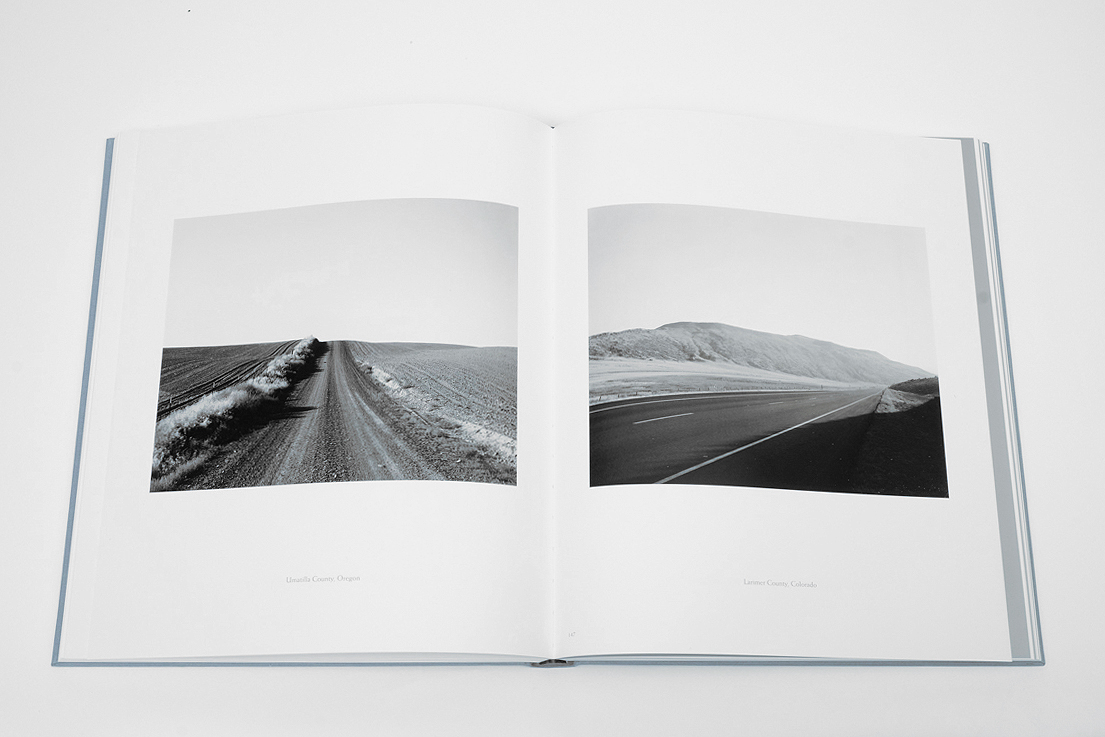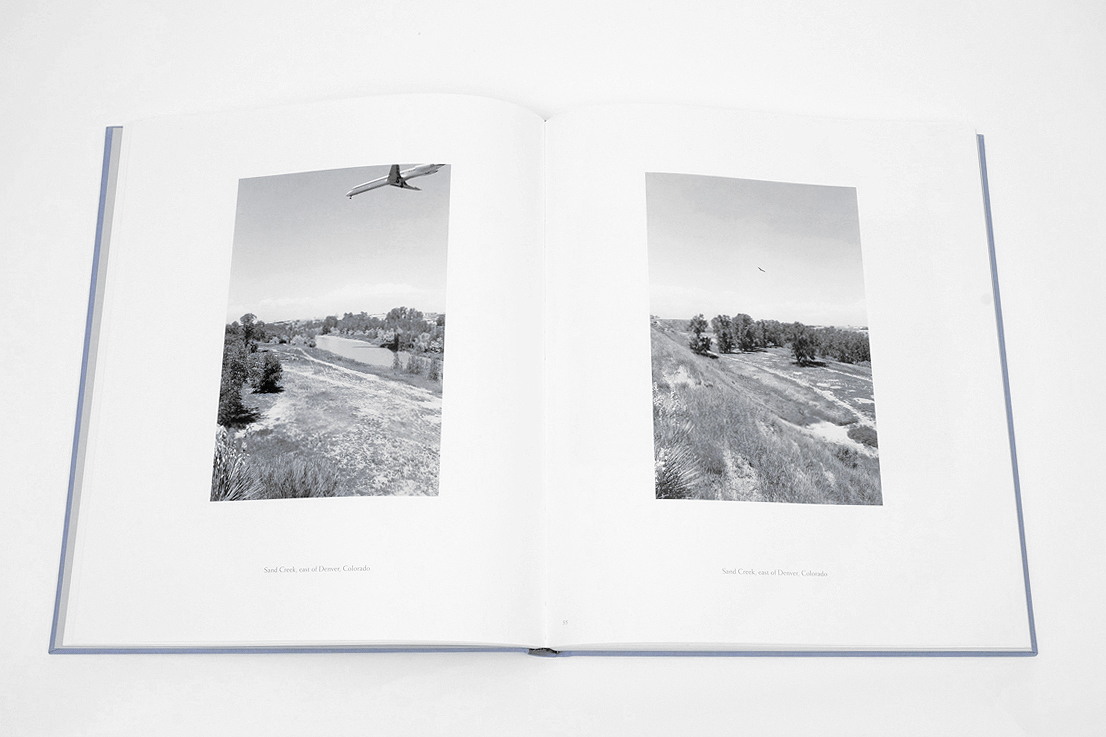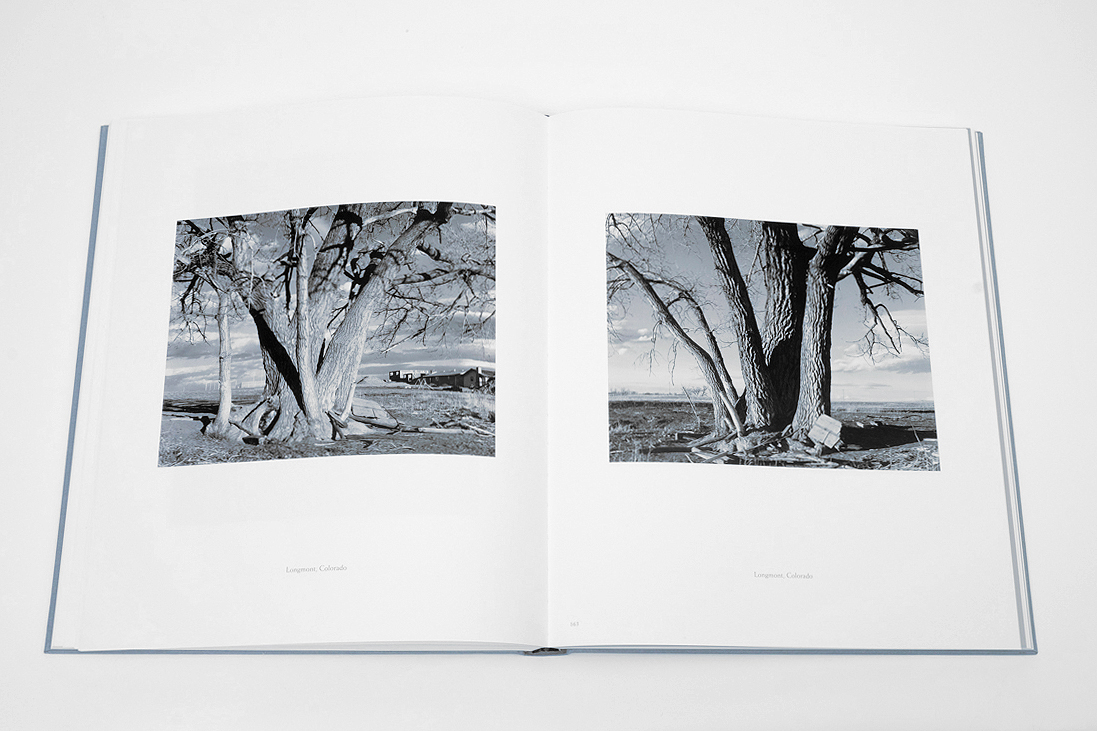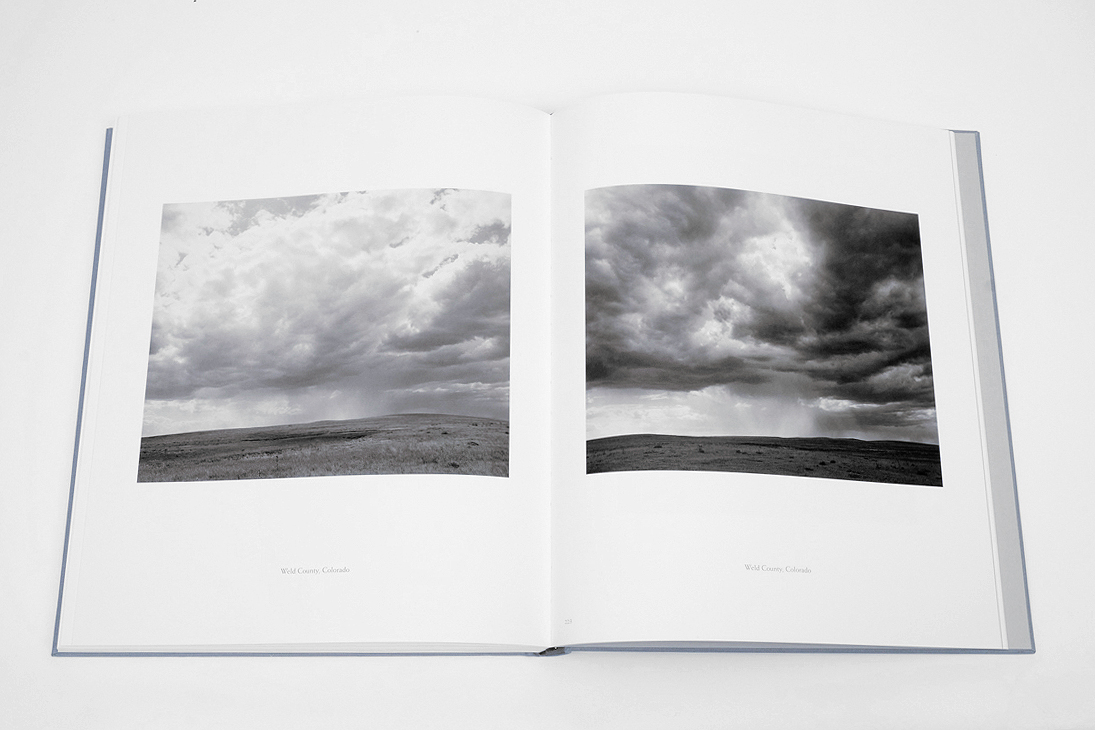If there is a single notion that links many of Robert Adams‘ books over the past four decades, it is that of walking – the clear sense behind the photographs of the footfalls that brought the artist before countless American western landscapes. Of course, walking with a camera slung over shoulder or around our necks is usually the case with any photographer and far from unique, but how many make ‚the walk‘ felt in their pictures? Recent books by Adams such as; Gone? (Steidl 2009), What Can We Believe Where? (Yale University Press 2010), Listening to the River (Aperture 1994), Tree Line (Steidl 2009), Turning Back (Fraenkel/Marks 2005) and of course the all encompassing The Place we Live (Steidl 2013), often give us less a selection of the individual photographic frames as isolated ‘masterpieces’ in favor of strings of associated images – paths that lead us through the landscape and deeper into Adams’ mindset.
Anyone who knows Robert Adams‘ photographs is aware that he is a steadfast conservationist. He can seem to be a pessimist pining to turn back time, so we as a world could chart the right course in regard to our treatment of our surroundings. His books often use American suburban developments as a point of departure where architecture and signage spring up in place of vegetation and there is the endless sense of the unfinished. Cities fall away at the outskirts and nature slowly regains its dominance but not without strong evidence of man’s wear and tear; the dramatic sky of a near perfect afternoon hangs over some illegally dumped garbage; a rock-shelf overlooking a far-off city is scrawled with spray-painted graffiti; a line of Alder trees succumb to the cut path of a dirt road. The sly work of Adams’ photographs is at work even when his landscapes seem pure and untouched – one still senses man’s future encroachment in their seemingly fragile beauty.
Adams writes in a brief statement about his work, „In middle age I revisited a number of marginal but beautiful landscapes that I have taken for granted when I was a boy. As I walked through them I sometimes asked myself whether in the coming years they would survive overpopulation, corporate capitalism, and new technology. On those days when I was lucky, however, my questions fell away into the quiet and the light.“ There is a comfortable loneliness about the pictures, as if the physical contemplation and concern of the landscape before him was what was most important. The photographs that result are the evidence, collected and shared – the byproduct of a slow paced walk.
You will find a selection of Robert Adams works here.





